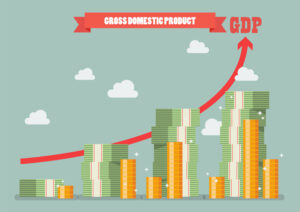Interest Rates, Money Supply, And GDP
The comments below are an edited and abridged synopsis of an article by Goldmoney Staff
That the world is on the edge of a monetary and economic cliff is becoming increasingly obvious. And becoming more obviously permanent than transient, price inflation will almost certainly lead to rising interest rates. Rising bond yields, falling equity markets and debt-triggered insolvencies will naturally follow.
According to economists, a prospective mix of so-called deflation and rising prices are contradictory, should not happen at the same time, and therefore cannot be explained. Yet that is the prospect they now face. The errors in their lack of economic judgment have evolved from the time when central banks began to manipulate their currencies to achieve economic objectives and then to subsequently dismiss the evidence of policy failure. It has been a cumulative process for the Federal Reserve and the Bank of England since the 1920s, which can only now end in a final catastrophic failure.
The denial of reasoned economic theory, embodied in a preference for state-driven outcomes over free markets, has led to this cliff edge. This article explains some of the key errors in economic and monetary theory that have taken the world to this point—principally the relationships between interest rates, money supply, and GDP.
Up for discussion: Introduction; erroneous beliefs over the role of interest rates; interest rates reflect time, not cost; the inflation problem; statistical misinterpretation of GDP and currency inflation; and the consequences of monetary policy errors.

